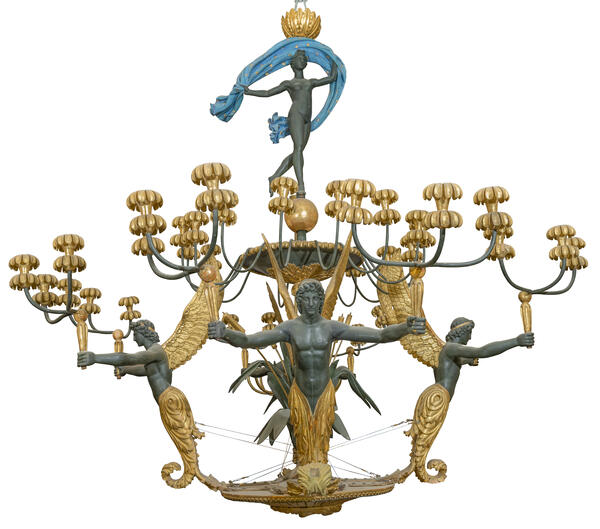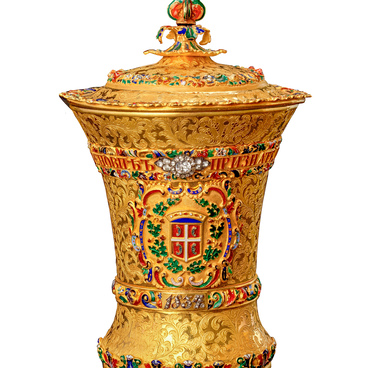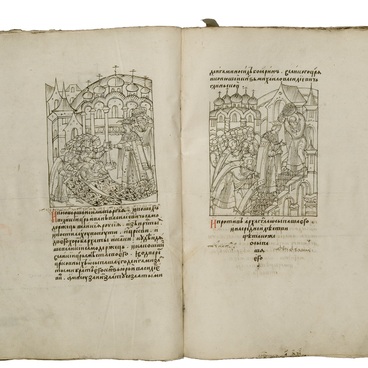Wooden chandeliers were quite uncommon in the 19th century. Most often the nobility furnished their homes with beautifully carved, gilded and engraved bronze items. Sometimes, however, their weight was too heavy to be supported by the ceiling, so bronze was replaced with lighter wood or papier-mâché. In this case, the chandelier was painted so that it was often difficult to distinguish it from a metal one. Such items were not regarded as cheap: their owners commissioned celebrated artisans and paid large sums of money. Chandeliers made of wood or papier-mâché hung in the palaces of the counts Sheremetev, the princes Gagarin and other famous aristocratic families.
The chandelier from the State Historical Museum collection was made by an unknown craftsman in the first quarter of the 19th century. The item was probably created by a team of carvers, gilders and painters who might have been serfs. However, the design was most likely produced by a professional architect or artist.
The chandelier is crowned by a figurine of a nude woman standing on a wooden ball and holding a blue scarf with gold stars above her head. Below she is surrounded by two tiers of candle cups. The upper tier consists of stylized representations of plants. In the lower one, anthropomorphic figures with male torsos and wings behind their backs hold candlesticks. The bottom finial is a stylized image of the Sun.
The parts of the chandelier were first covered with “levkas” — a kind of gesso prepared from chalk, fish glue and linseed oil. When the gesso dried, some of the details were gilded and some were painted black. The same method was used to carve wooden iconostases, make interior doors and fancy wooden decorations for royal and noble residencies.
The chandelier from the State Historical Museum collection was made by an unknown craftsman in the first quarter of the 19th century. The item was probably created by a team of carvers, gilders and painters who might have been serfs. However, the design was most likely produced by a professional architect or artist.
The chandelier is crowned by a figurine of a nude woman standing on a wooden ball and holding a blue scarf with gold stars above her head. Below she is surrounded by two tiers of candle cups. The upper tier consists of stylized representations of plants. In the lower one, anthropomorphic figures with male torsos and wings behind their backs hold candlesticks. The bottom finial is a stylized image of the Sun.
The parts of the chandelier were first covered with “levkas” — a kind of gesso prepared from chalk, fish glue and linseed oil. When the gesso dried, some of the details were gilded and some were painted black. The same method was used to carve wooden iconostases, make interior doors and fancy wooden decorations for royal and noble residencies.



